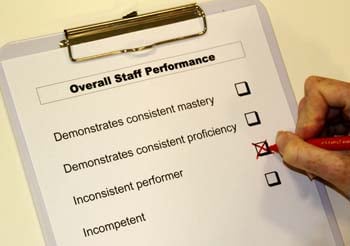
According to the the research paper "Relative Effectiveness of Worker Safety and Health Training Methods" from the American Journal of Public Health in February 2006, ...
 To get trainees to remember new information, you need to get the information to encode into the brain.
To get trainees to remember new information, you need to get the information to encode into the brain.
Based on current research, there are four techniques you need to include to help people remember the training.
These are:
1. Use lots of Visuals - According to Dr John Medina, the author of Brain Rules, we're really good at remembering pictures. Various studies have found that recognition doubles for a picture compared with text. Reading is inefficient for us, but we are able to comprehend pictures instantly (read Why Using Visuals in your Communication is so Important for more information). In fact, when we team a visual up with audio, the information is dual-encoded in the brain which enables better recall ability. Combining photos with text is also more effective than just using pictures alone.
2. Repeat to Remember -According to Dr John Medina, the human brain can only hold about seven pieces of information for less than 30 seconds! Which means, your brain can only handle a 7-digit phone number. If you want to extend the 30 seconds to a few minutes or even an hour or two, you will need to consistently re-expose yourself to the information. Memories are so volatile that you have to repeat to remember. For trainers it's important to get trainees to repeat the new information around 90-120 minutes after the initial learning occurred. Trainees will remember information better with repeated exposure to information at specifically timed intervals. This provides the most powerful way to fix memory into the brain.
Thinking or talking about a lesson immediately after it has occurred improves memory recall of the information. Deliberate repetition can lessen memory loss. Make sure repetitions are spaced out after each topic.
In a workplace setting, techniques to help remember the lesson include talking about it (getting trainees to think about ways the information might have personally effected them or others in the past is helpful), undertaking a demonstration with class members and then coaching for improvement or doing a quiz.
4. Go through the training at a moderate pace - Fast training that's undertaken in unstoppable waves of information makes it difficult to learn. Give people time to digest the information. Break the training down into 10 minute chunks. After 10 minutes of learning, undertake a new activity. Choose one that produces an emotional connection to the information such as telling a story, watching a video or a relevant activity.
5. Use a range senses - Research has found that groups in multisensory environments always learn better than groups in unisensory training environments. Try and use as many senses as you can. Get people to touch examples, hear sounds (audio/music works well in training videos), taste (pretty easy for food service companies, not so good for chemical companies) and smell.
Remember engaging training is active training. Design your workplace training materials around interactive elements. So the more you can do to get trainees to interact with the information, the higher the likelihood of them recalling the training information over time.

According to the the research paper "Relative Effectiveness of Worker Safety and Health Training Methods" from the American Journal of Public Health in February 2006, ...

It goes without saying that staff training is incredibly important for continual company improvement.